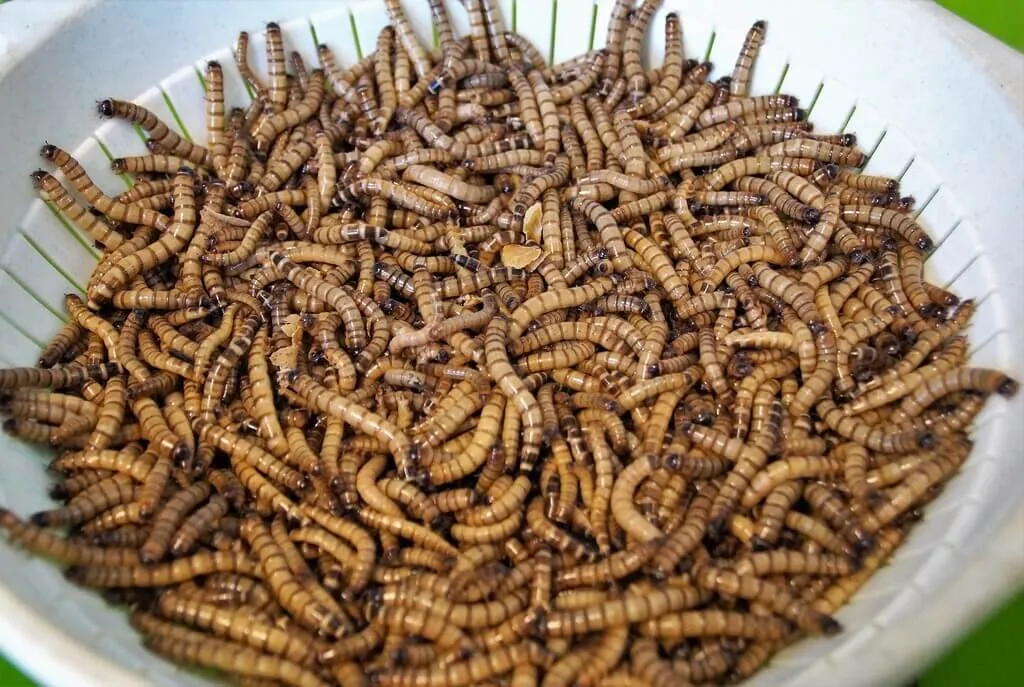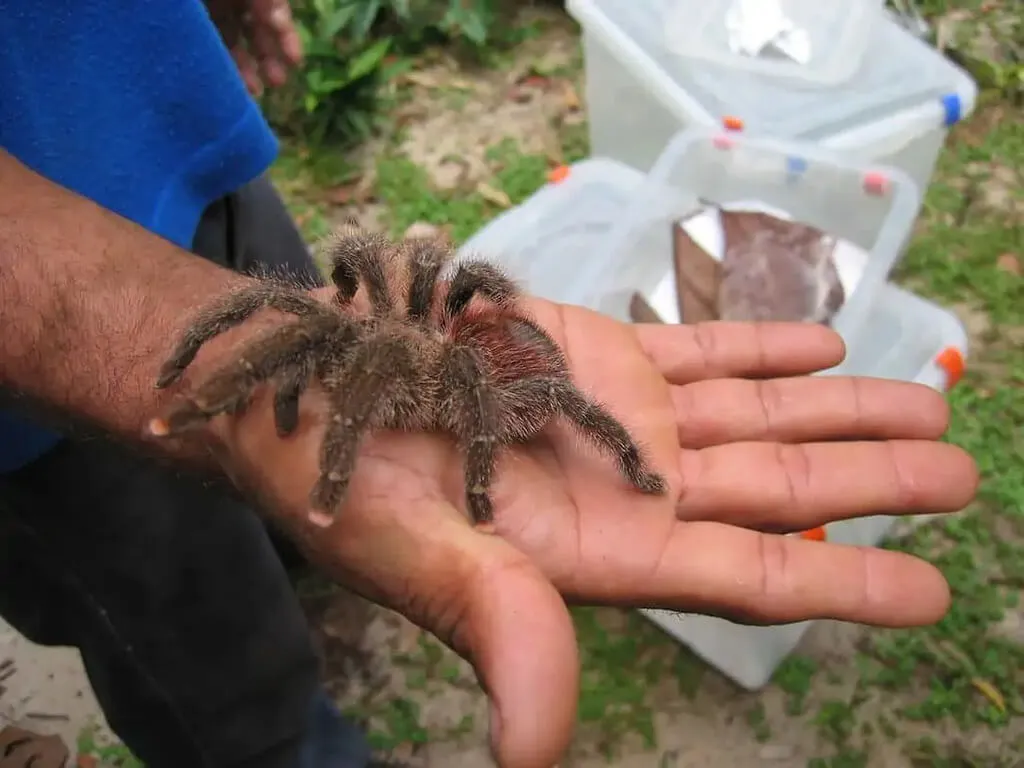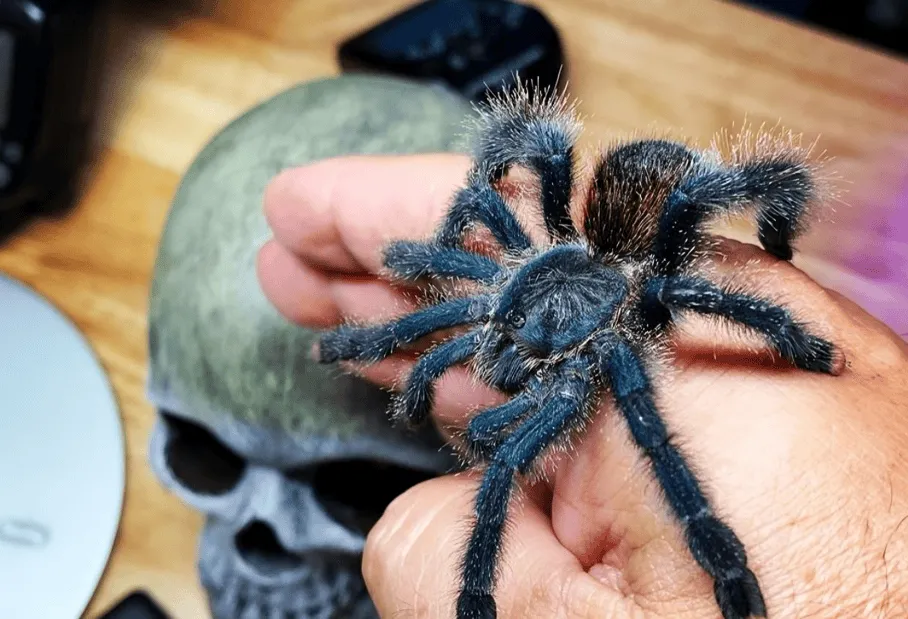Why is My Pink Toe Tarantula Not Eating? (Top 5 Reasons)
Discovering your pink toe tarantula isn’t eating can be a worrying experience. These beautiful arboreal tarantulas, known for their striking pink toe pads, are usually voracious eaters. A refusal to eat can signal underlying issues that need prompt attention. This guide will explore the top five reasons why your pink toe tarantula might be turning down meals, helping you diagnose the problem and take appropriate action. Understanding the potential causes – from environmental factors to health concerns – is crucial for ensuring your pet’s well-being and promoting a healthy appetite. We will cover everything from temperature and stress to molting and diet, giving you the knowledge to care for your tarantula effectively and confidently. By addressing these potential issues, you can often restore your tarantula’s appetite and ensure it thrives in your care.
Temperature Issues and Appetite
Temperature plays a vital role in a pink toe tarantula’s appetite and overall health. These tarantulas thrive in specific temperature ranges, and deviations can lead to a loss of appetite. If the enclosure is too cold, the tarantula’s metabolism slows down, making it less likely to feel hungry or be able to digest food properly. Conversely, excessively high temperatures can also stress the tarantula, suppressing its desire to eat. Maintaining the correct temperature is therefore paramount. Temperature fluctuations can also impact a tarantula’s willingness to eat, so stable conditions are crucial for maintaining a healthy appetite. Regularly monitoring the temperature within the enclosure is essential to identify and correct any issues promptly.
Heating and Humidity Guide for Pink Toe Tarantulas

To ensure your pink toe tarantula maintains a healthy appetite, it is crucial to replicate its natural habitat as closely as possible. This begins with proper heating and humidity control. The ideal temperature range for a pink toe tarantula is generally between 75-80°F (24-27°C). A reliable thermometer is essential to monitor the enclosure’s temperature accurately. Avoid direct sunlight, which can overheat the enclosure. Humidity levels should be maintained between 70-80%. Regular misting with dechlorinated water, especially in the morning and evening, can help achieve this. Good ventilation is also important to prevent mold growth. Use a hygrometer to measure humidity and adjust misting frequency as needed. Providing these environmental conditions contributes to the tarantula’s comfort and encourages a healthy feeding response.
Stress Factors Affecting Feeding
Stress can significantly impact a pink toe tarantula’s appetite. These tarantulas are sensitive to disturbances in their environment, and any perceived threat can cause them to retreat and stop eating. This can include handling, loud noises, or changes in their enclosure. Minimizing stress is therefore crucial for maintaining their appetite and well-being. Observe your tarantula’s behavior to identify potential stressors and make adjustments accordingly. Create a calm and consistent environment that mimics their natural habitat to promote a sense of security. Providing a hiding place is also vital, as it allows the tarantula to feel safe and secure. By reducing stress, you can encourage your pink toe tarantula to feed and thrive.
Handling and Environmental Stress
Overhandling can be a major source of stress for pink toe tarantulas, leading to a loss of appetite. While it can be tempting to handle your pet, these tarantulas are generally best observed from a distance to minimize stress. Frequent handling can disrupt their routine, make them feel unsafe, and negatively impact their willingness to eat. Other environmental stressors include loud noises, bright lights, and vibrations. Ensure the enclosure is placed in a quiet area away from disturbances. Changes to the enclosure, such as redecorating or moving the tarantula to a new location, can also cause stress. Maintaining a consistent environment is crucial for encouraging healthy feeding habits. Providing a secure and predictable environment is key to their well-being and appetite.
Molting and Its Impact on Eating

Molting, the process of shedding their exoskeleton, is a natural and necessary part of a tarantula’s life cycle. During this period, pink toe tarantulas typically stop eating. This is because they need to conserve energy for the molting process. As the tarantula prepares to molt, its appetite will decrease and it may become lethargic. The molting process itself can take several weeks, during which the tarantula will remain in a vulnerable state. It’s essential to avoid disturbing the tarantula during this time, and to provide the right conditions for a successful molt. Providing proper humidity is critical to prevent the tarantula from drying out during molting. After molting, the tarantula’s appetite will gradually return as its new exoskeleton hardens. Patience and observation are key during the molting process.
Signs Your Tarantula is Preparing to Molt
Recognizing the signs of an impending molt can help you understand why your pink toe tarantula is not eating. Several indicators suggest your tarantula is preparing to shed its exoskeleton. The most obvious sign is a decrease or complete cessation of eating. The tarantula may also become less active, spending more time in its hide. The abdomen may appear darker or more swollen. You might also notice the tarantula starting to build a web mat or sealing off its burrow. Some tarantulas will also lose their appetite a few weeks before molting, so take note of the change in their feeding behavior. Providing adequate humidity and avoiding disturbances during this period will significantly support a successful molt. Observing these behaviors will help you determine if your tarantula’s lack of appetite is due to molting.
Parasites and Illnesses
Parasites and illnesses can also cause a pink toe tarantula to stop eating. While tarantulas are generally hardy, they can still be affected by internal or external parasites, as well as various health problems. A loss of appetite is often one of the first signs of illness. Other symptoms to watch for include lethargy, unusual posture, and changes in appearance. If you suspect your tarantula is ill, it is crucial to seek professional veterinary advice from a vet experienced with invertebrates. Early diagnosis and treatment can significantly improve the chances of recovery. Prevention is key, ensuring a clean enclosure and providing appropriate diet can go a long way in maintaining the health of your pink toe tarantula.
Common Diseases in Pink Toe Tarantulas

While pink toe tarantulas are generally robust, several diseases can affect their health and appetite. Internal parasites can affect the tarantula’s ability to feed and digest food properly. External parasites, such as mites, can cause irritation and distress, leading to loss of appetite. Bacterial or fungal infections can also occur, often due to poor enclosure hygiene or inadequate ventilation. Symptoms of these diseases may include lethargy, loss of appetite, discoloration, and unusual behavior. If you observe any of these signs, it is crucial to isolate the tarantula and consult with a veterinarian experienced in invertebrate care. Early detection and treatment can often prevent more severe health complications.
Dietary Problems and Solutions
The type and quality of food you offer can also impact your pink toe tarantula’s willingness to eat. These tarantulas are primarily insectivores, meaning their diet should consist mainly of insects. Feeding them a variety of appropriately sized insects is vital for their health and to stimulate their appetite. Providing the correct food can significantly affect their willingness to eat. The insects you feed your tarantula should be gut-loaded, meaning they have been fed a nutritious diet prior to being offered to your pet. This ensures the tarantula receives essential nutrients. Avoid feeding your tarantula insects that have been exposed to pesticides, as these can be toxic. Regularly assess the quality and variety of food you offer to ensure your tarantula receives a balanced diet.
Feeding Frequency and Prey Size for Pink Toe Tarantulas
Understanding the appropriate feeding frequency and prey size is essential for maintaining a healthy appetite in your pink toe tarantula. Young tarantulas should be fed more frequently, typically every 2-3 days, while adults can be fed once or twice a week. The size of the prey should be appropriate for the tarantula’s size; the insect should ideally be no larger than the tarantula’s body length. Overfeeding can also lead to problems, so it is important to offer only what the tarantula can comfortably consume. Remove any uneaten prey within 24 hours to prevent stress and potential health issues. Varying the insects offered, such as crickets, mealworms, and roaches, can also help stimulate the tarantula’s appetite. Regular monitoring of your tarantula’s feeding habits will allow you to fine-tune the feeding schedule and prey size to suit your pet’s needs.
How to Encourage Your Tarantula to Eat

If you have identified potential issues, such as temperature problems, it is time to take steps to encourage your pink toe tarantula to eat. First and foremost, address any environmental issues, ensuring proper temperature, humidity, and a stress-free environment. Offer fresh, appropriately sized prey at regular intervals. If your tarantula still refuses food, try different types of insects or try leaving the prey in overnight. Make sure the prey is active, as tarantulas are more likely to hunt live prey. Do not disturb the tarantula’s enclosure during feeding to avoid stress. By carefully adjusting these factors, you can improve the likelihood of your tarantula resuming its normal feeding habits. Patience is important; it may take some time for the tarantula to adjust.
Providing a Suitable Habitat
The habitat plays a crucial role in ensuring your pink toe tarantula eats and thrives. A well-designed enclosure should mimic the tarantula’s natural habitat and provide everything the tarantula needs. The enclosure should be properly ventilated, with a secure lid to prevent escapes. Provide a substrate appropriate for arboreal tarantulas, such as coconut fiber, which helps retain humidity. Add climbing structures, such as branches or cork bark, which mimic the arboreal tarantula’s natural environment, and provide hiding places. Ensure the enclosure is kept clean and free from debris. A proper enclosure helps reduce stress and encourages the tarantula to feed. Creating an ideal environment is a key step toward maintaining your tarantula’s health and appetite.
